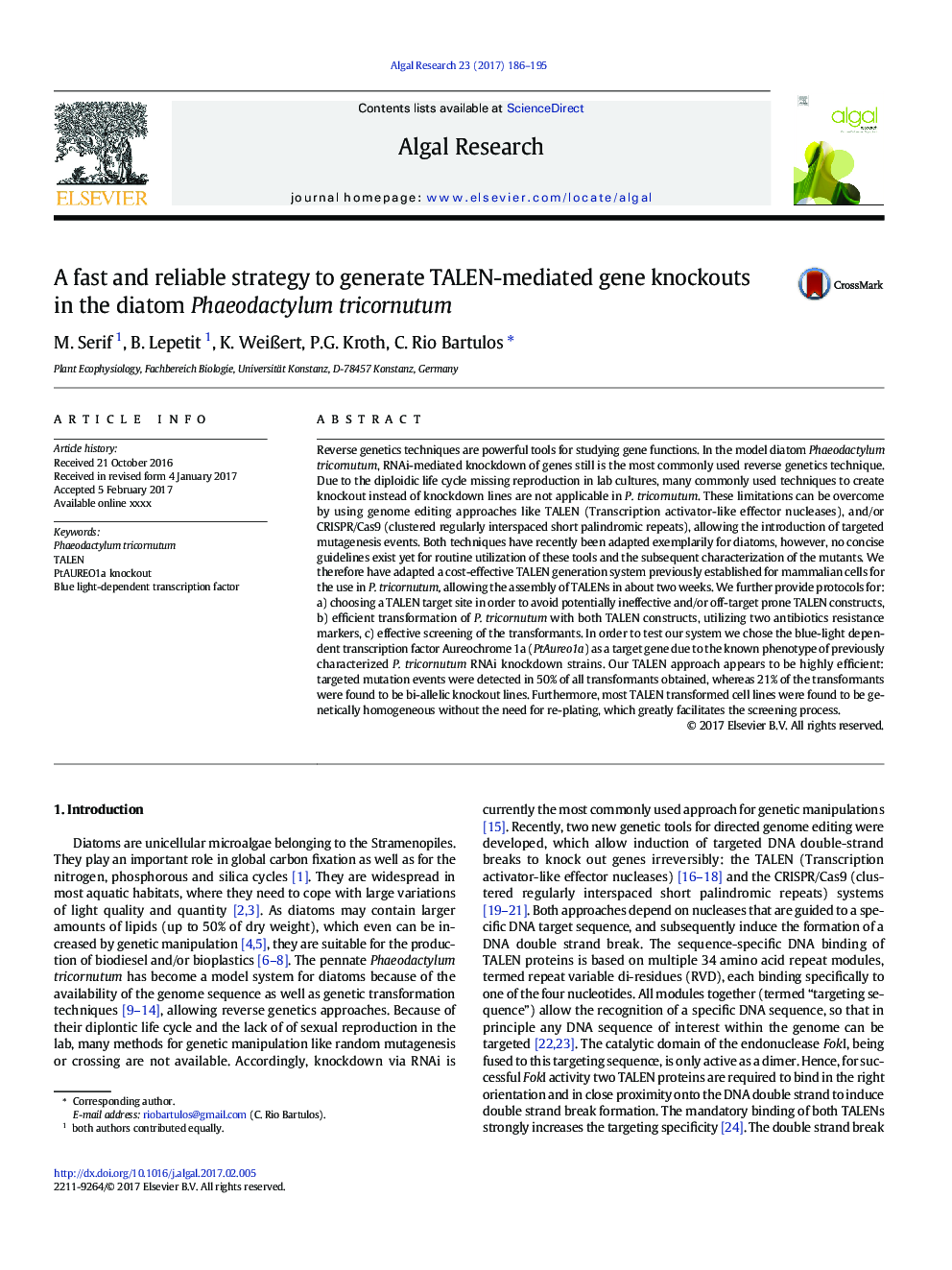| Article ID | Journal | Published Year | Pages | File Type |
|---|---|---|---|---|
| 5478331 | Algal Research | 2017 | 10 Pages |
Abstract
Reverse genetics techniques are powerful tools for studying gene functions. In the model diatom Phaeodactylum tricornutum, RNAi-mediated knockdown of genes still is the most commonly used reverse genetics technique. Due to the diploidic life cycle missing reproduction in lab cultures, many commonly used techniques to create knockout instead of knockdown lines are not applicable in P. tricornutum. These limitations can be overcome by using genome editing approaches like TALEN (Transcription activator-like effector nucleases), and/or CRISPR/Cas9 (clustered regularly interspaced short palindromic repeats), allowing the introduction of targeted mutagenesis events. Both techniques have recently been adapted exemplarily for diatoms, however, no concise guidelines exist yet for routine utilization of these tools and the subsequent characterization of the mutants. We therefore have adapted a cost-effective TALEN generation system previously established for mammalian cells for the use in P. tricornutum, allowing the assembly of TALENs in about two weeks. We further provide protocols for: a) choosing a TALEN target site in order to avoid potentially ineffective and/or off-target prone TALEN constructs, b) efficient transformation of P. tricornutum with both TALEN constructs, utilizing two antibiotics resistance markers, c) effective screening of the transformants. In order to test our system we chose the blue-light dependent transcription factor Aureochrome 1a (PtAureo1a) as a target gene due to the known phenotype of previously characterized P. tricornutum RNAi knockdown strains. Our TALEN approach appears to be highly efficient: targeted mutation events were detected in 50% of all transformants obtained, whereas 21% of the transformants were found to be bi-allelic knockout lines. Furthermore, most TALEN transformed cell lines were found to be genetically homogeneous without the need for re-plating, which greatly facilitates the screening process.
Keywords
Related Topics
Physical Sciences and Engineering
Energy
Renewable Energy, Sustainability and the Environment
Authors
M. Serif, B. Lepetit, K. WeiÃert, P.G. Kroth, C. Rio Bartulos,
